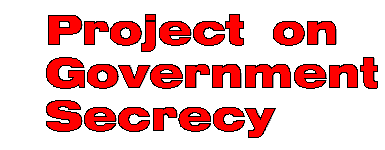

The Invention Secrecy Act of 1951 requires the government to impose "secrecy orders" on certain patent applications that contain sensitive information, thereby restricting disclosure of the invention and withholding the grant of a patent. Remarkably, this requirement can be imposed even when the application is generated and entirely owned by a private individual or company without government sponsorship or support. Invention Secrecy
There are several types of secrecy orders which range in severity from simple prohibitions on export (but allowing other disclosure for legitimate business purposes) up to classification, requiring secure storage of the application and prohibition of all disclosure.
At the end of fiscal year 2025, there were 6,543 secrecy orders in effect.
- Invention Secrecy Activity, statistics reported by the U.S. Patent and Trademark Office, through FY 2025
- Patents granted to formerly secret patent applications in FY 2015, list of three patents granted, November 2015
- Patents granted to formerly secret patent applications in FY 2014, list of six patents granted, November 2014
- Secrecy orders rescinded with patents issued, 1982-1988, US Patent and Trademark Office
- Secrecy orders rescinded with patents issued, 1988-2012 arranged by patent application number, US Patent and Trademark Office
* * *
- Patents and Their Secrets via YouTube, "A look at the history of Patent Secrecy Orders and a visualization tool to help analyze trends"
- Do Patents Enable Disclosure? Evidence from the Invention Secrecy Act by Gaétan de Rassenfosse et al, December 2023
- The Consequences of Invention Secrecy: Evidence from the USPTO Patent Secrecy Program in World War II by Daniel P. Gross, Harvard Business School working paper, February 2019
- US Patents Related to the Manhattan Project, 2017, History and Public Policy Program Digital Archive, Obtained via FOIA request by Bill Streifer, via Wilson Center
- Litigation: Damnjanovic v. U.S. Air Force
- Complaint seeking compensation for secrecy order filed by inventors Budimir Damnjanovic and Desanka Damnjanovic, May 14, 2014
- Court Order granting in part and denying in part Air Force motion to dismiss, September 22, 2015
- Stipulation of Settlement awarding inventors a lump sum payment of $63,000, December 1, 2015
- Congratulations, Your Genius Patent is Now a Military Secret by Joshua Brustein, Bloomberg, June 8, 2016
- Patent and Trademark Office Notice on Invention Secrecy, Federal Register, April 23, 2013. "In the interest of national security, patent laws and rules place certain limitations on the disclosure of information contained in patents and patent applications and on the filing of applications for patents in foreign countries."
- Government secrecy orders on patents keep lid on inventions by G.W. Schulz, Center for Investigative Reporting, April 16, 2013.
- Request for Comments on Using Secrecy Orders to Conceal Economically Significant Patents, Federal Register, April 20, 2012. "The US Patent and Trademark Office (USPTO) is seeking comments as to whether the United States should identify and bar from publication and issuance certain patent applications as detrimental to the nation's economic security. The USPTO is also seeking comments on the desirability of changes to the existing procedures for reviewing applications that might be detrimental to national security."
- The Invention Secrecy Act of 1951, text of 35 U.S.C. 181-188
- DoD Patent Security Review Process, Department of Defense Directive 5535.02, March 24, 2010
- Secrecy, Access, National Security, and Foreign Filing, Manual of Patent Examining Procedure (MPEP), Chapter 0100, US Patent and Trademark Office, Eighth Edition, August 2001
- Petitions for rescission or removal of a Patent Secrecy Order filed with the USPTO, 2011 (via governmentattic.org)
- Petitions for rescission or removal of a Patent Secrecy Order filed with the USPTO, 2005-2010 (via governmentattic.org)
- A List of Patent Application Numbers Subject to a Secrecy Order that has been Rescinded, from October 2005 - September 2006
- Patent Security Category Review List (January 1971 edition)
- Patent Security Category Review List (redacted) (May 2009 edition)
- Secrecy Order Forms of various kinds issued by the U.S. Patent and Trademark Office (courtesy of Michael Ravnitzky)
- The Secrecy Order Program in the U.S. Patent & Trademark Office, June 1991
- Administration of the Invention Secrecy Act in the Patent & Trademark Office, 1991
- Secrecy of Certain Inventions, implementing regulations from 37 Code of Federal Regulations part 5
- Protecting the Private Inventor Under the Peacetime Provisions of the Invention Secrecy Act by Sabing H. Lee, Berkeley Technology Law Journal, 12:2, Fall 1997.
- The Government's Classification of Private Ideas (excerpt), hearings before a subcommittee of the House Committee on Government Operations, Ninety-Sixth Congress, February 28, March 20 and August 21, 1980
- Secret Patenting in the USSR and Russia by John Martens
- National Defense and Industrial Property by Nathalie Wuylens
International Agreements on Defense-Related Patents, Classified Patent Applications and Invention Secrecy (courtesy of Michael Ravnitzky)
- US-Australia (1961)
- US-Belgium (1960)
- US-Denmark (1960)
- US-France (1957)
- US-Germany (1956)
- US-Greece (1960)
- US-Italy (1952)
- US-Japan (1956)
- US-Korea (1991)
- NATO Agreement (1977)
- NATO Agreement (1969)
- NATO Agreement (1974)
- NATO Agreement (1960)
- US-Netherlands (1959)
- US-Norway (1960)
- US-Spain (1960)
- US-Sweden (1962)
- US-Turkey (1957)
- US-United Kingdom (1953)
maintained by Steven Aftergood